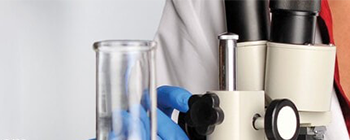Learn More
CD289 (TLR9) Monoclonal Antibody (eB72-1665), eBioscience™, Invitrogen™
Rat Monoclonal Antibody
Supplier: Invitrogen 14909982
Description
Description: eB72-1665 is generated against a portion of human toll-like receptor 9 (aa 273-288), a molecule reported to be expressed predomitly intracellularly. TLR9 is a ∽115-120 kDa molecule, which mediates response to unmethylated CpG dinucleotides in bacterial DNA. CpG DNA induces a strong T-helper-1-like inflammatory response and the proliferation of TLR9-positive human B cells. When stimulated with CpG DNA, TLR9-deficient (TLR9-/-) mice lacked splenocyte proliferation, inflammatory cytokine production from macrophages, and dendritic cell maturation, as compared with normal mice. To date, at least twelve members of the Toll family have been identified. This family of type I transmembrane proteins is characterized by an extracellular domain with leucine-rich repeats and a cytoplasmic domain with homology to the type I IL-1 receptor. Members of the TLR family are involved in recognition and response to different microbial components including lipoproteins, peptidoglycans, and nucleic acids and play important roles in innate immunity and inflammation. TLR9 is not detected by flow cytometry using this antibody on lysed whole human blood and/or isolated human PBMC stained for cell surface or intracellular TLR9. This may be due to limitations of antigen detection by flow cytometry. Human pDCs matured in the presence of IL-3 have been reported to stain with eB72-1665 by immunofluorescence microscopy (Nat Immunol. 5:190).
The protein encoded by this gene is a member of the Toll-like receptor family which plays a fundamental role in pathogen recognition and activation of innate immunity. TLRs are highly conserved from Drosophila to humans and share structural and functional similarities. They recognize pathogen-associated molecular patterns that are expressed on infectious agents, and mediate the production of cytokines necessary for the development of effective immunity. The various TLRs exhibit different patterns of expression. This gene is preferentially expressed in immune cell rich tissues, such as spleen, lymph node, bone marrow and peripheral blood leukocytes. Studies in mice and human indicate that this receptor mediates cellular response to unmethylated CpG dinucleotides in bacterial DNA to mount an innate immune response.Specifications
| CD289 (TLR9) | |
| Monoclonal | |
| 0.5 mg/mL | |
| PBS with 0.09% sodium azide; pH 7.2 | |
| Q9NR96 | |
| Tlr9 | |
| Affinity chromatography | |
| RUO | |
| 54106 | |
| 4° C | |
| Liquid |
| Flow Cytometry, Immunohistochemistry (Paraffin), Immunoprecipitation, Western Blot | |
| eB72-1665 | |
| Unconjugated | |
| Tlr9 | |
| CD289; Tlr9; toll like receptor 9; toll-like receptor 9; UNQ5798/PRO19605 | |
| Rat | |
| 100 μg | |
| Primary | |
| Human | |
| Antibody | |
| IgG2a κ |
For Research Use Only.



-Flow-20170216130641.jpg-250.jpg)